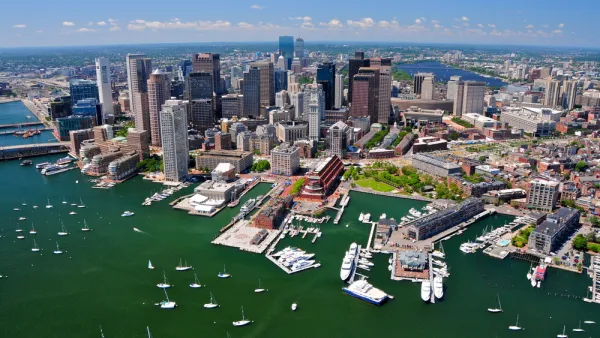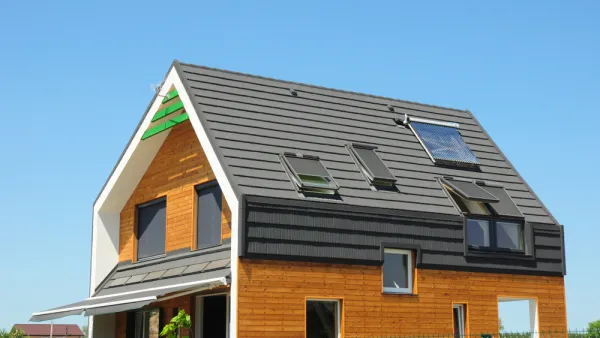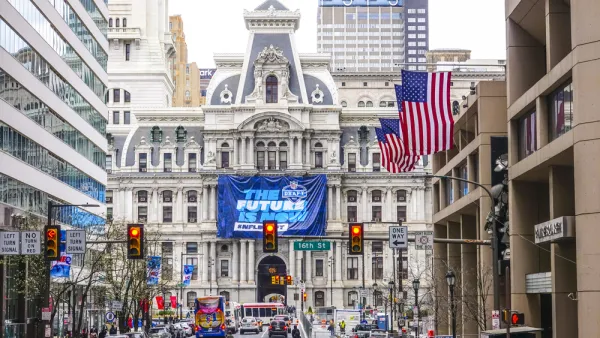The energy costs of big houses on big lots overshadow the benefits of energy efficiency.
As we have reported here before, the built environment is the single largest consumer of materials, and these energy expenditures account for 42 percent of all greenhouse gasses emitted in the United States.
Even though "energy efficiency" has become a very popular consumer product since the environmental movement of the 1970s took off, American single-family houses have doubled in size since then, and they are full of much more energy-sapping stuff.
"Energy intensity, or the units of energy expended per household, has actually increased since the early 1980s, with the average home using 183 million British thermal units (Btu) in 1981 and 188.7 million in 2011," reports Aarian Marshall.
Where there was once one TV in one modest living room, there are now many TVs in many rooms. Add to that laptops, robots, sound systems, security systems, heating and cooling systems and the myriad kitchen appliances and handy gadgets that accommodate modern life: it’s a lot of energy-hungry stuff.
Apartments and mobile homes, however, have made modest but significant declines in overall energy consumption. Since 1970, apartments with 2-5 units have decreased energy usage by five percent; apartments with five or more units have slashed 12 percent; and mobile home consumption is down eight percent.
Marshall warns: "Many Americans may still want a single-family home in the suburbs, but that’s not the path to an energy efficient future."
FULL STORY: America’s Increasingly Large Homes Are Making Us Less Energy Efficient

Analysis: Cybertruck Fatality Rate Far Exceeds That of Ford Pinto
The Tesla Cybertruck was recalled seven times last year.

National Parks Layoffs Will Cause Communities to Lose Billions
Thousands of essential park workers were laid off this week, just before the busy spring break season.

Retro-silient?: America’s First “Eco-burb,” The Woodlands Turns 50
A master-planned community north of Houston offers lessons on green infrastructure and resilient design, but falls short of its founder’s lofty affordability and walkability goals.

Test News Post 1
This is a summary

Analysis: Cybertruck Fatality Rate Far Exceeds That of Ford Pinto
The Tesla Cybertruck was recalled seven times last year.

Test News Headline 46
Test for the image on the front page.
Urban Design for Planners 1: Software Tools
This six-course series explores essential urban design concepts using open source software and equips planners with the tools they need to participate fully in the urban design process.
Planning for Universal Design
Learn the tools for implementing Universal Design in planning regulations.
EMC Planning Group, Inc.
Planetizen
Planetizen
Mpact (formerly Rail~Volution)
Great Falls Development Authority, Inc.
HUDs Office of Policy Development and Research
NYU Wagner Graduate School of Public Service




























